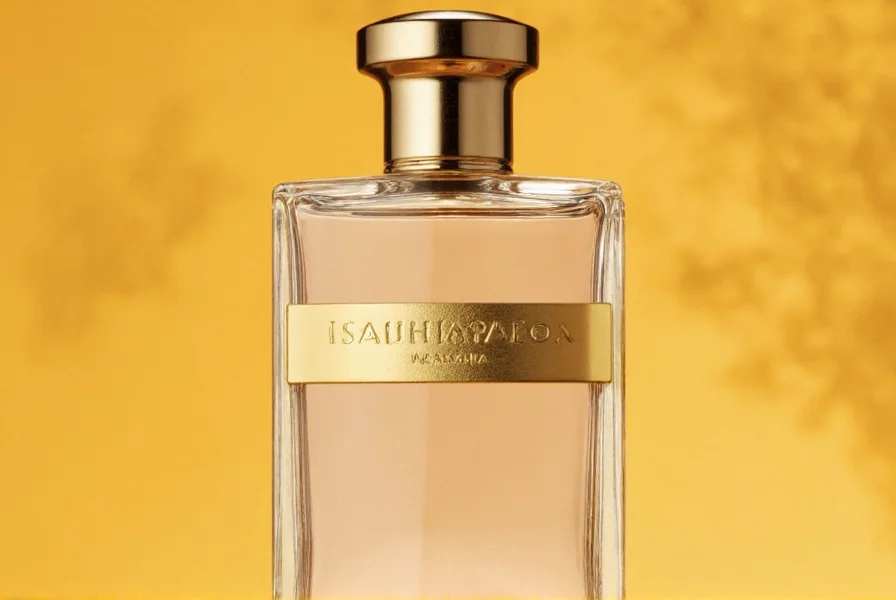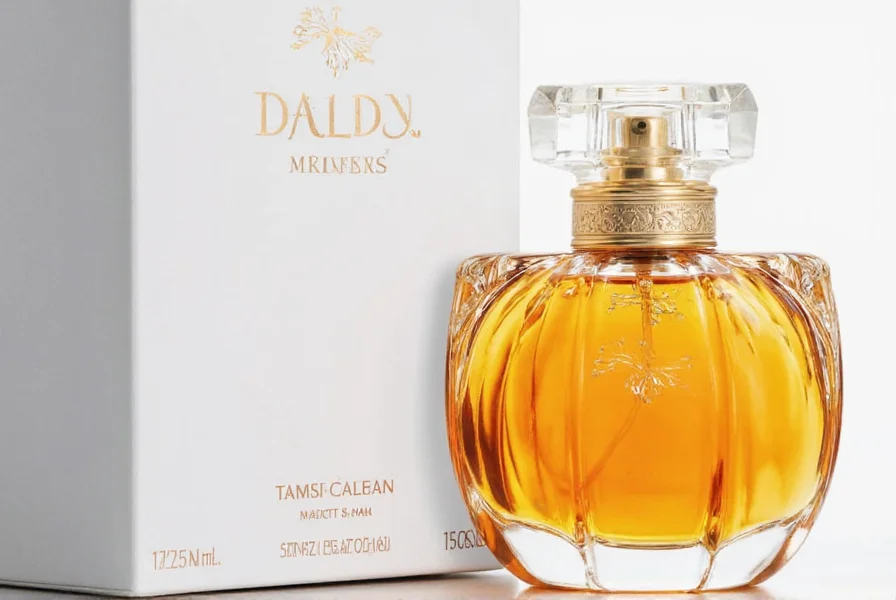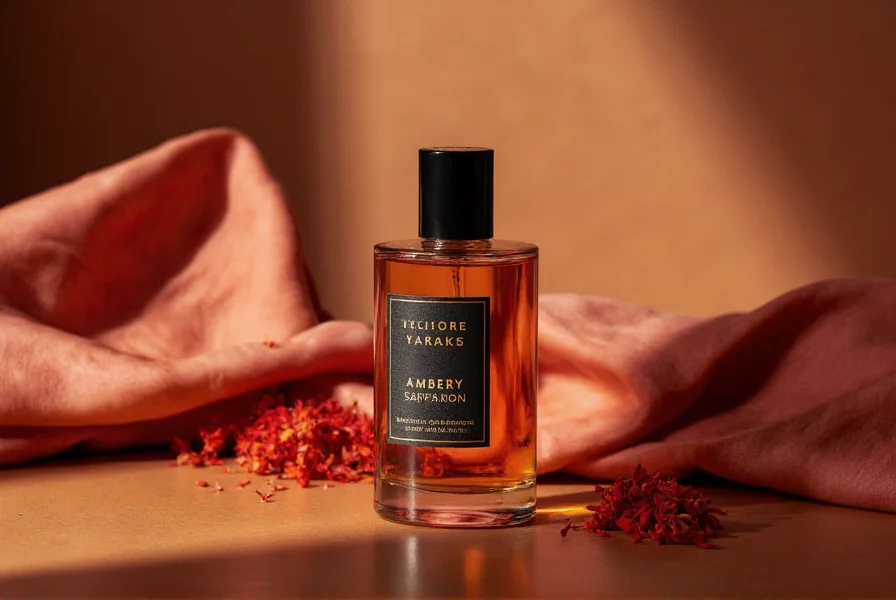Understanding the Ambery Saffron Fragrance Profile
Ambery saffron represents one of perfumery's most intriguing aromatic combinations, blending two distinct olfactory elements into a harmonious whole. The "ambery" component doesn't refer to fossilized tree resin but rather to a warm, sweet, slightly powdery accord created through synthetic and natural ingredients that mimic the scent of ancient amber. Saffron, the world's most expensive spice, contributes its distinctive leathery, hay-like, and subtly metallic character that elevates the composition.
When properly balanced, ambery saffron fragrances create a sophisticated sensory experience that evolves throughout wear. The initial impression typically features saffron's spicy top notes, which gradually soften to reveal the golden warmth of the amber base. This transition creates what perfumers call "sillage"—the fragrant trail that follows the wearer—making these scents particularly memorable.
The Science Behind the Scent Combination
From a chemical perspective, saffron's primary aromatic compounds include safranal (responsible for its distinctive scent) and picrocrocin (which contributes to its bitter taste). When combined with the vanillin, labdanum, and benzoin typically found in amber accords, these compounds create complex molecular interactions that produce a scent greater than the sum of its parts.
Perfumers carefully calibrate the ratio of these elements. Too much saffron can overwhelm with its medicinal quality, while excessive amber can make the fragrance cloying. The ideal ambery saffron composition maintains a delicate equilibrium where neither note dominates, creating what fragrance experts call "olfactory harmony."
| Fragrance Component | Chemical Characteristics | Sensory Impact |
|---|---|---|
| Saffron | Safranal, picrocrocin | Spicy, leathery, slightly metallic |
| Amber Accord | Labdanum, vanillin, benzoin | Warm, resinous, slightly sweet |
| Ambery Saffron Blend | Combined molecular interaction | Golden warmth with spicy depth |
Historical Context of Ambery Saffron in Perfumery
The use of saffron in fragrances dates back to ancient civilizations, where it was prized for both its scent and perceived medicinal properties. Historical records show saffron was used in Egyptian embalming rituals and as a status symbol in Roman baths. However, the specific ambery saffron combination emerged more recently as perfumery evolved from single-note compositions to complex accords.
Modern ambery saffron fragrances gained prominence in the early 21st century as perfumers sought to create sophisticated scents that balanced warmth with complexity. This profile particularly resonates with contemporary preferences for fragrances that tell a sensory story rather than simply providing a single-note experience.

Identifying Quality Ambery Saffron Fragrances
When evaluating ambery saffron fragrances, several markers indicate quality composition. First, the saffron note should never smell medicinal or overly pungent—it should integrate seamlessly with the amber base. Second, the fragrance should demonstrate "development," meaning it changes character as it interacts with skin chemistry throughout the wearing experience.
Professional perfumers assess ambery saffron compositions using a technique called "fragrance wheel analysis," which examines how the scent fits within broader olfactory families. True ambery saffron fragrances typically fall within the "oriental" or "amber" fragrance families, often with spicy or leathery subcategories.
Who Benefits Most from Ambery Saffron Scents
Ambery saffron fragrances particularly suit individuals seeking sophisticated, non-candy-like scents with depth and complexity. These compositions work exceptionally well for cooler seasons when warmer fragrances are preferred, though lighter interpretations can work year-round. The profile appeals to those who appreciate nuanced scents that evolve throughout the day rather than maintaining a single-note consistency.
From a psychological perspective, ambery saffron fragrances often convey confidence without aggression, making them suitable for professional environments where subtlety is valued. The golden warmth of the scent profile creates what aromatherapists describe as "emotional resonance"—a feeling of comfort and sophistication that enhances the wearer's presence.

Comparing Ambery Saffron to Similar Fragrance Profiles
While ambery saffron shares characteristics with other warm fragrance profiles, it maintains distinct qualities that set it apart. Unlike pure amber fragrances, which can sometimes feel one-dimensional, the saffron addition provides necessary complexity and prevents the scent from becoming cloying. Compared to straight saffron fragrances, the amber base softens saffron's potentially harsh edges, making the composition more wearable for extended periods.
When contrasted with similar spice-forward profiles like cinnamon or cardamom-based fragrances, ambery saffron offers a more sophisticated, less immediately sweet experience. The metallic undertone of saffron creates a unique dimension absent in other spice notes, giving ambery saffron compositions an intriguing quality that reveals itself gradually.
Practical Considerations for Ambery Saffron Fragrance Selection
Selecting an ambery saffron fragrance requires attention to several factors beyond the basic scent profile. Concentration matters significantly—eau de parfum formulations typically showcase this complex profile better than lighter eau de toilette versions. Application technique also affects the experience; applying to pulse points allows body heat to gradually release the fragrance notes throughout the day.
Seasonal appropriateness plays a crucial role in enjoying ambery saffron scents. During warmer months, lighter interpretations with higher citrus or herbal top notes may prove more comfortable, while richer, more resinous versions excel in cooler weather. Understanding these nuances helps ensure the fragrance enhances rather than competes with your natural environment.
Common Questions About Ambery Saffron Fragrances
What exactly makes a fragrance 'ambery saffron'?
An ambery saffron fragrance specifically combines the warm, resinous qualities of amber (typically created through labdanum, vanillin, and benzoin) with the distinctive spicy, slightly metallic character of saffron. The key is in the balance—neither note should dominate, creating a harmonious composition where the saffron's complexity enhances the amber's warmth rather than competing with it. True ambery saffron fragrances showcase development, meaning the scent evolves as it interacts with skin chemistry throughout wear.
How does ambery saffron differ from regular amber fragrances?
Ambery saffron fragrances incorporate saffron's distinctive spicy, leathery notes that add complexity and depth to the base amber accord. While regular amber fragrances often present a more straightforward warm, sweet, resinous profile, the addition of saffron creates contrast and evolution in the scent experience. The saffron note typically appears in the opening phase, gradually softening to reveal the golden warmth of the amber base, resulting in a more dynamic fragrance journey compared to single-focus amber compositions.
Are ambery saffron fragrances suitable for all seasons?
Ambery saffron fragrances work best in cooler seasons due to their warm, resinous character, though lighter interpretations can work year-round. During warmer months, look for versions with citrus or herbal top notes that provide freshness to balance the warmth. In cooler weather, richer, more resinous ambery saffron compositions excel as they complement the ambient temperature. The key is selecting a concentration and formulation appropriate for the season—eau de parfum typically works better in winter, while lighter concentrations suit summer.
Why do some ambery saffron fragrances smell medicinal?
When saffron is overused or poorly balanced in a fragrance, it can produce a medicinal quality due to its natural chemical composition. Quality ambery saffron fragrances carefully calibrate the saffron note to showcase its desirable spicy, leathery characteristics without crossing into medicinal territory. This requires expert formulation where the saffron integrates seamlessly with the amber base rather than dominating it. The presence of supporting notes like leather, tobacco, or subtle florals often helps mitigate potential medicinal qualities.
How long should a quality ambery saffron fragrance last?
A well-formulated ambery saffron fragrance in eau de parfum concentration should last 6-8 hours on skin, with the saffron notes most prominent in the first 1-2 hours before transitioning to the warmer amber base. The longevity depends on several factors including concentration (eau de parfum lasts longer than eau de toilette), skin chemistry, and application technique. Proper application to pulse points allows body heat to gradually release the fragrance notes throughout the wearing period, maximizing both longevity and the scent's developmental qualities.











 浙公网安备
33010002000092号
浙公网安备
33010002000092号 浙B2-20120091-4
浙B2-20120091-4